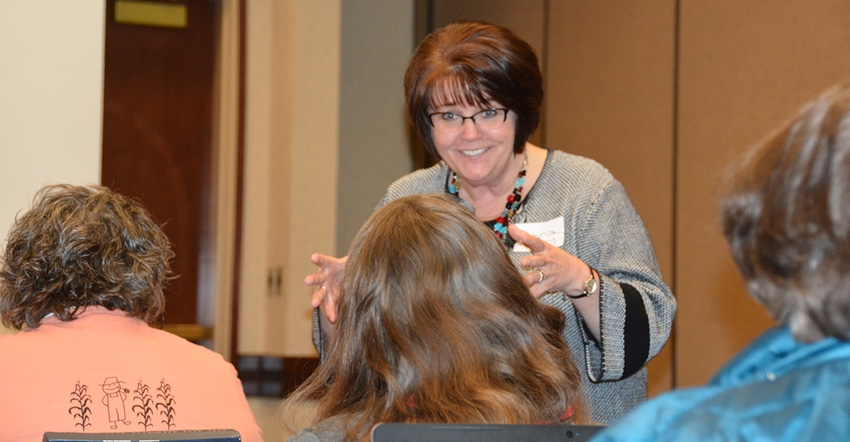March 25, 2019

I’ve lamented in this column before that I’m not a very good ag advocate, especially when confronted by my vegan California sister-in-law about GMOs, animal rights and factory farming.
I get tongued tied and don’t know what to say to “educate” her.
But Donna Moenning, a trainer with the Center for Food Integrity, says that’s exactly the problem.
I am thinking always thinking about how to convince her that she is wrong. Instead, I should be listening to her and trying to understand her. I need to be curious. I should know where she is coming from.
Talking effectively with consumers about food and farming isn’t about facts and figures, Moenning says. It’s about empathy and trust.
Moenning, who spoke at South Dakota Soybean’s recent Hungry For Truth workshop, “Tackling Tough Conversations — How To Talk To Consumers About Food and Farming,” told a story about somebody she ran into who challenged her. She was in a New Jersey market and met a butcher who had an extensive meat case. But she noticed that he had more imported meats than usual.
She complimented the man on the display and asked, “But why do you have so much imported meat?”
He said that he bought meat from other countries because the he couldn’t get meat from the U.S. The Midwest’s land was “toxic,” he said. “They can’t grow anything anymore.”
Moenning, who farms in Minnesota herself, was taken aback. Her first impulse was to tell him he was wrong.
I would have thought, “What an idiot!”
Instead, Moenning replied, “Wow, I hadn’t heard that before that. Tell me more.”
As he explained, Moenning would interject, “that’s really interesting” and “I didn’t know that” to keep him talking and let him know she was listening. She asked how she could get more information about it. She let him know she shared his values: “I really care about food quality, too … I have family and want them to have the best food possible.”
Finally — when they were talking like good friends — she said, “you know I am a Minnesota farmer myself. Have you ever been to Minnesota? No? I can assure you that our farm and all of our neighbors’ farms are very productive. We produce some wonderful grain and meat from the livestock we raise.”
She ended up giving him a couple of farms’ websites to look at and invited him to visit if he got a chance.
The conversation took all of five minutes. Moenning and the butcher departed on good terms.
Moenning left the store knowing she hadn’t changed his mind, but she hoped she had planted a seed of curiosity. Maybe what he thought he knew wasn’t the absolute truth. Maybe it was “fake news.”
Frankly, this approach sounds exhausting. I don’t know if have the patience for it. But clearly my way hasn’t worked with my sister-in-law. I will have to give Moenning’s method a try.
Maybe I can plant a seed, too.
Maybe it will grow.
You May Also Like




